Mark Tooze
master brummie
I think it is a pull out awning / sunshade - not 100% sure? Birmingham trams generally had the destinations on the sides, not the front.
Last edited:
It was the equivalent of today's sun visor, pulled out at an angle.I think it is a pull out awning / sunshade - not 100% sure? Birmingham trams generally had the destinations on the sides, not the front.
The number 11 bus was like a banana always came in bunches.In the times before prolific car ownership you did not have to wait for long for a tram. If you just missed one then another would be along in a minute or two. They did have a certain degree of style, not the plastic or metal of modern vehicles.
I always though it was not who but Watt that invented the steam enginewho invented the steam engine... and when?
Here's a brief history of steam power:
- 1st century CE: Hero of Alexandria demonstrates a steam-powered spinning sphere called an aeolipile.
- 16th century CE: Italian architect Giovanni Branca (1571–1640) uses a steam jet to rotate the blades of a small wheel, anticipating the steam turbine developed by Sir Charles Parsons in 1884.
- 1680: Dutch physicist Christiaan Huygens (1629–1693) makes the first piston engine using a simple cylinder and piston powered by exploding gunpowder. Huygens' assistant Denis Papin (1648–c.1712) realizes steam is a better way to drive a cylinder and piston.
- 1698: Thomas Savery (c.1650–1715) develops a steam-powered water pump called the Miner's Friend. It's a simple reciprocating steam engine (or beam engine) for pumping water from mines.
- 1712: Englishman Thomas Newcomen (1663–1729) develops a much better design of steam-powered, water-pumping engine than Savery and is usually credited with inventing the steam engine. A Scottish engineer named James Watt (1736–1819) figures out a much more efficient way of making power from steam after improving a model of the Newcomen engine. Watt's improvements of Newcomen's engine lead to the widespread adoption of steam.
- 1770: French army officer Nicolas-Joseph Cugnot (1725–1804) invents a steam-powered, three-wheeled tractor.
- 1797: English mining engineer Richard Trevithick (1771–1833) develops a high-pressure steam version of Watt's engine, paving the way for steam locomotives.
- 1803: English engineer Arthur Woolf (1776–1837) makes a steam engine with more than one cylinder.
- 1804: American industrialist Oliver Evans (1775–1819) invents a steam-powered passenger vehicle. Like Trevithick, he recognizes the importance of high-pressure steam and builds more than 50 steam-powered vehicles.
- 1807: American engineer Robert Fulton (1765–1815) runs the first steamboat service along the Hudson River.
- 1819: Steam-powered ocean ship Savannah crosses the Atlantic from New York to Liverpool in only 27 days.
- 1825: English engineer George Stephenson (1781–1848) builds the world's first steam railway between the towns of Stockton and Darlington. To begin with, steam locomotives pull only heavy coal trucks, while passengers are ferried in horse-drawn carriages.
- 1830: The Liverpool and Manchester Railway becomes the first to use steam power for hauling both passengers and freight.
- 1882: The prolific American inventor Thomas Edison (1847–1931) opens the world's first commercial power plant at Pearl Street, New York. It uses high-speed steam engines to power the electricity generators.
- 1884: English engineer Sir Charles Parsons (1854–1931) develops the steam turbine for his high-speed steam boat T
Same here, The telephone exchange and the Fox and goose game. I also loved the cut away Merlin Engine, i used to stand and wonder how it was designed and made. A beautiful functional sculpture of metal. I cannot understand how Birmingham can spend hundreds of millions pounds on the Commonwealth games, and not have a dedicated musem to Science and industry. Alf.COn the subject of steam, the Dorset steam fair is back again this year, 25 to 29 August.
I loved the Birmingham Science Museum. I can still see the demo telephone exchange working in my mind’s eye. When I was old enough to go into town on my own, that was number one destination.
Andrew.
some bits and pieces ended up at the Millennium point Think tank where you pay £14 to look at them, I was fascinated by the collection of guns in the original museum and made a working replica of a 17th century wheelock pistol I saw there but they have all disappeared along with everything else. Probably stored in the proof house with limited access by appointment only.Same here, The telephone exchange and the Fox and goose game. I also loved the cut away Merlin Engine, i used to stand and wonder how it was designed and made. A beautiful functional sculpture of metal. I cannot understand how Birmingham can spend hundreds of millions pounds on the Commonwealth games, and not have a dedicated musem to Science and industry. Alf.C

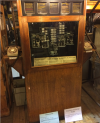
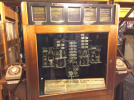
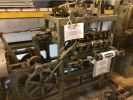
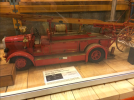
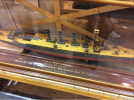
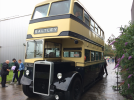
I can hear it now. Thanks.Here is the telephone exchange mentioned earlier (I think I also spent a large part of my childhood playing on this....):-
i loved to hear the relays chatter when you dialed a numberOn the subject of steam, the Dorset steam fair is back again this year, 25 to 29 August.
I loved the Birmingham Science Museum. I can still see the demo telephone exchange working in my mind’s eye. When I was old enough to go into town on my own, that was number one destination
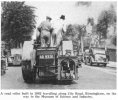
There's 23 photos of the road roller AB9331 hereSeen in a August 1953 Meccano Magazine, this Aveling Porter Single Cylinder Steam Roller made in 1862, was found some years ago on the roadside near Lichfield.
It is seen here driven by Mr T.G.Hunt to it's final resting place at the New Science & Industry Museum, travelling along City Road, which it originally helped to lay.
View attachment 179526
Avoncroft museum near Bromsgrove has a working demo exchange and informative ex-BT engineers who can explain the process.i loved to hear the relays chatter when you dialed a number
Amazing how reliable that system was considering the number of moving parts!Both Avoncroft and that little telephone exchange are very interesting. I popped in last year and had a chat to the guy looking after it.
View attachment 179530
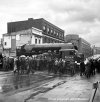
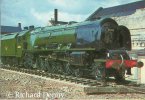
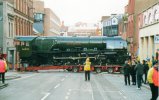

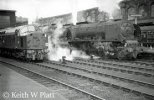
Something romantic about steam locos! I know things have to change but it never hurts to dream a little!I used to love the Traction engines rally in Newhall Street, seen it every year in the 60's and early 70's.
Found these 2 pictures of the 46235 City of Birmingham originally the 6235. This Train used to be in the science museum and is now at the Think Tank. I remember it used to move a short distance on the tracks in the science museum at sheduled times. I am guessing the train was being sited in The science museum in the first photo and relocated to The Think Tank in the Third Photo.
A little history attached in the link. https://preservedbritishsteamlocomotives.com/46235-city-of-birmingham-lms-6235-br-46235/
